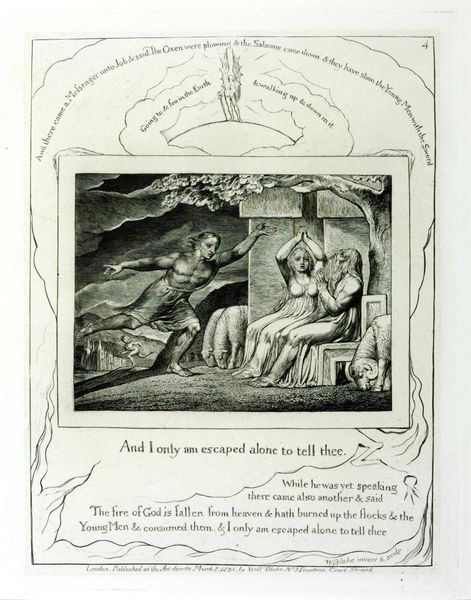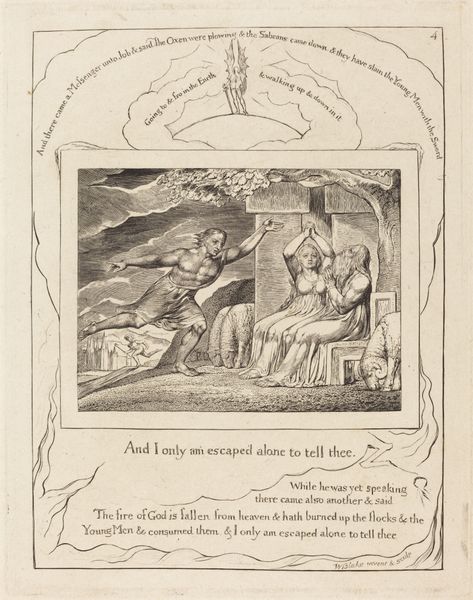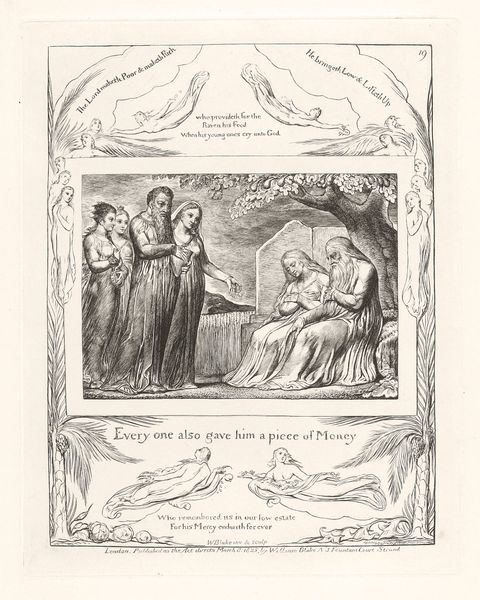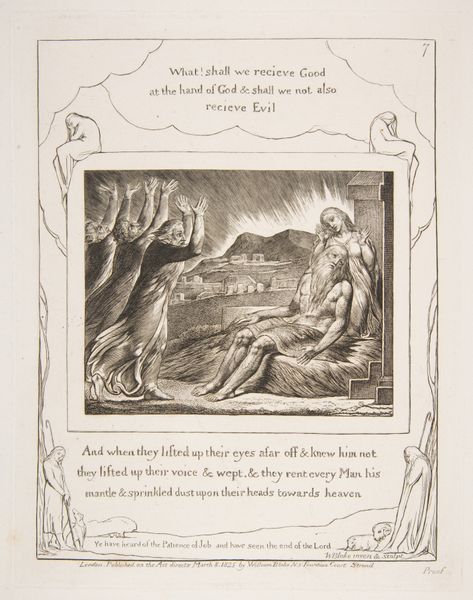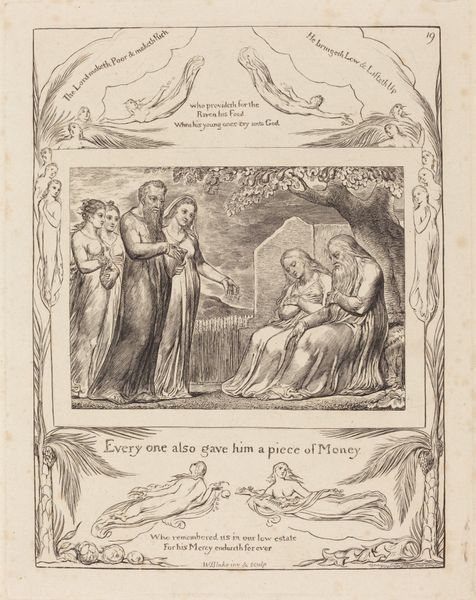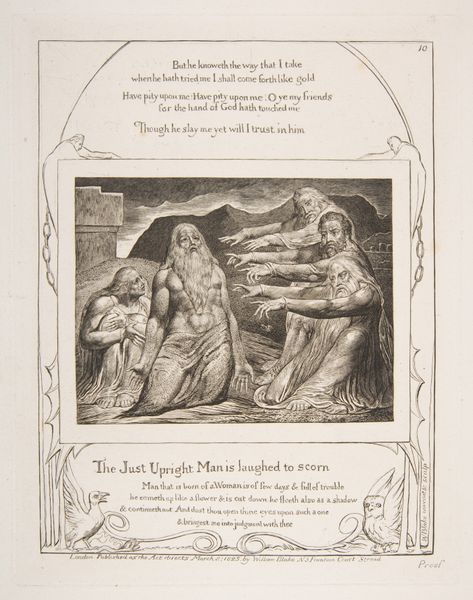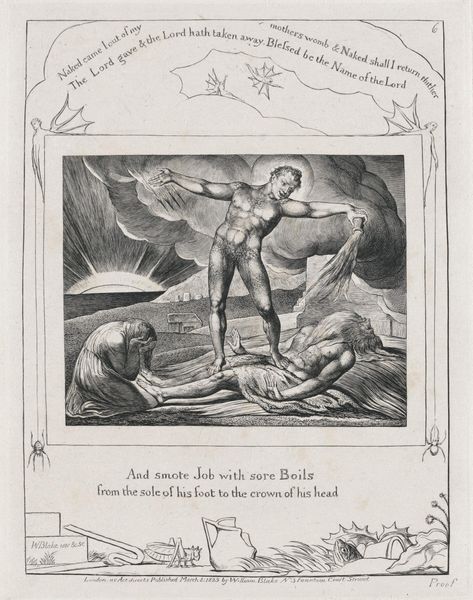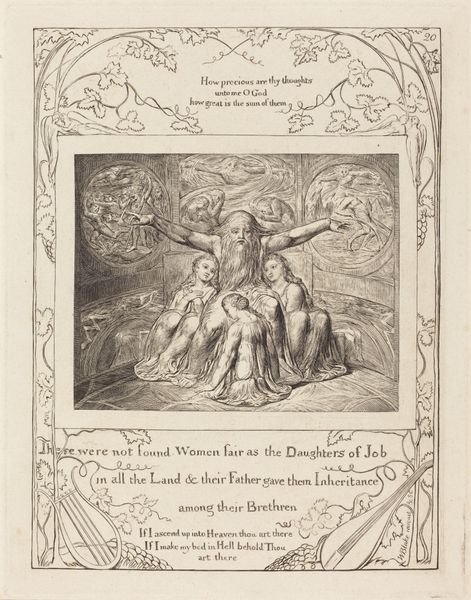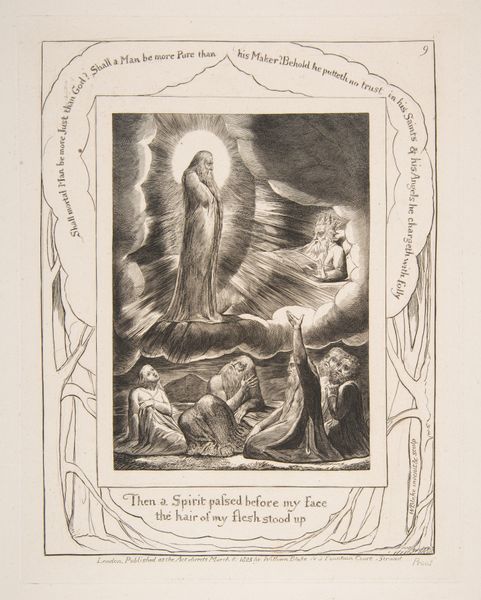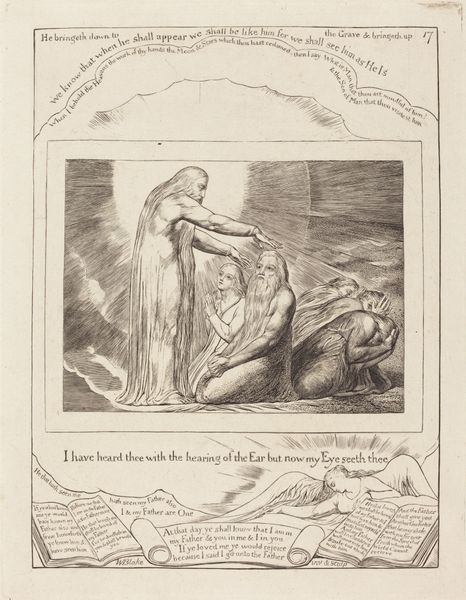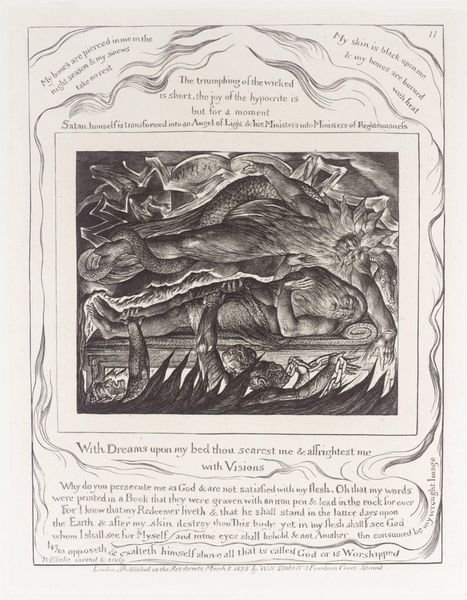
drawing, print, engraving
#
drawing
#
narrative-art
# print
#
figuration
#
england
#
romanticism
#
line
#
history-painting
#
engraving
Dimensions: 8 1/2 x 6 5/8 in. (21.59 x 16.83 cm) (sheet)
Copyright: Public Domain
This engraving by William Blake, from his Illustrations of the Book of Job, presents a stark scene rendered with meticulous detail. The composition is divided, with text framing a central image, creating a visual and textual interplay. Blake uses line and form to convey emotion and spiritual ideas. The figures, rendered with a dramatic intensity, are caught in moments of profound distress. Look at the lines etched to show the musculature of the messenger, and how that contrasts with the more softly rendered lines used for the seated figures. Blake's technique invites us to consider the structural elements as symbolic. The flowing lines of the text contrast with the angular forms of the figures, suggesting a tension between divine word and human experience. Blake's work destabilizes conventional religious interpretations, inviting viewers to grapple with questions of suffering, faith, and divine justice. It compels us to consider how the structural arrangement of an artwork serves to challenge fixed meanings and engage with new ways of understanding complex themes.
Comments
minneapolisinstituteofart almost 2 years ago
⋮
Two messengers arrive left feet first to announce the disasters. For Blake, the right hand and foot symbolized the spiritual; the left evoked the material. Job and his wife are seated beneath a pair of heavy stone crosses. Above them is a tree with scant foliage and no fruit. To the left, the Gothic church appears for the last time in the series. The news strikes Job like the thunderbolt depicted in the margins. Satan penetrates even deeper into Job's soul; he surmounts the globe and moves inward with his sword in his left hand. On the upper corners of the composition lie the forms of dead angels-the innocent joys or spiritual blessings, which will be revived later.
Join the conversation
Join millions of artists and users on Artera today and experience the ultimate creative platform.
